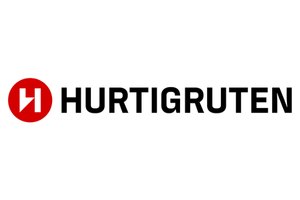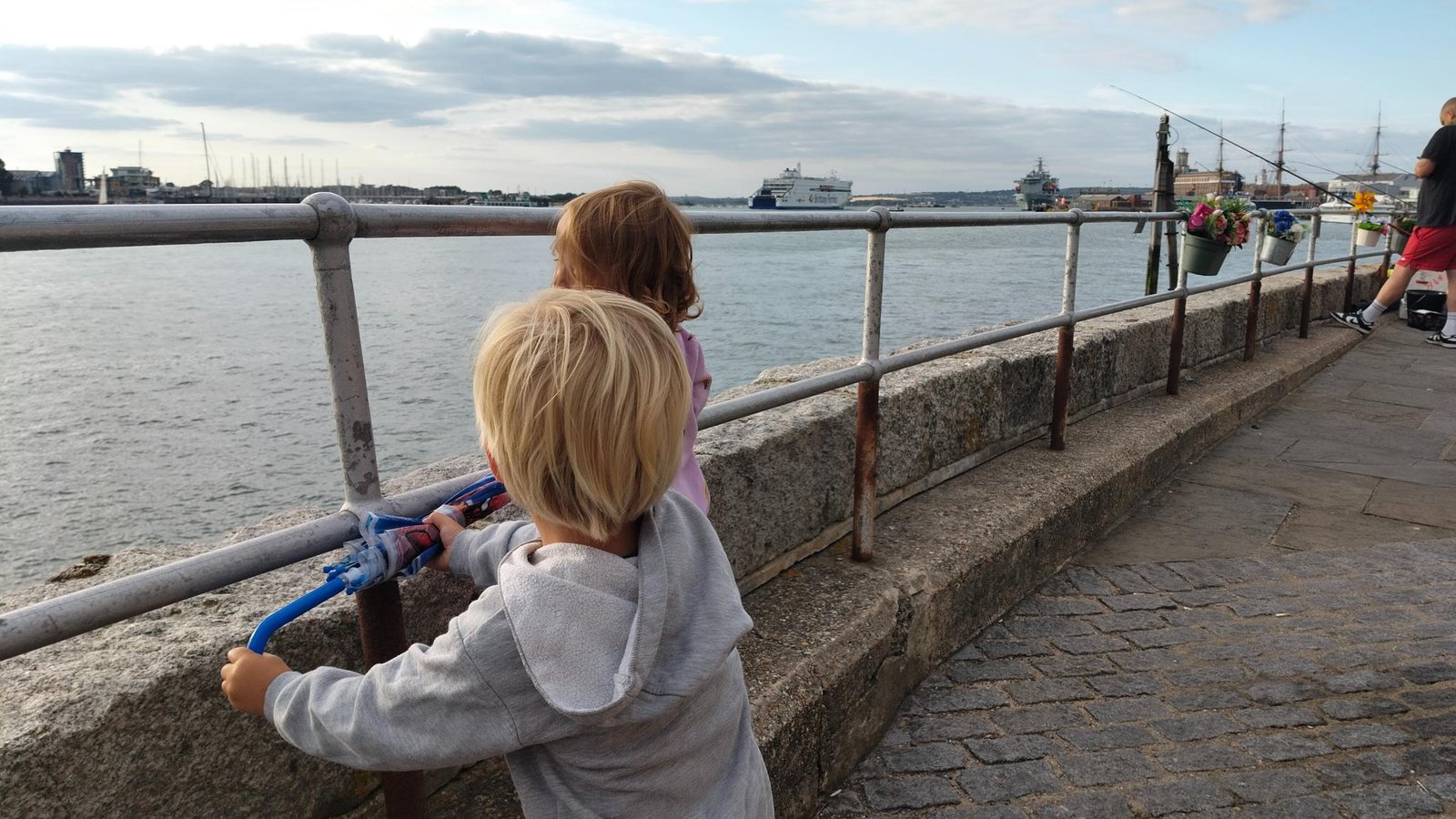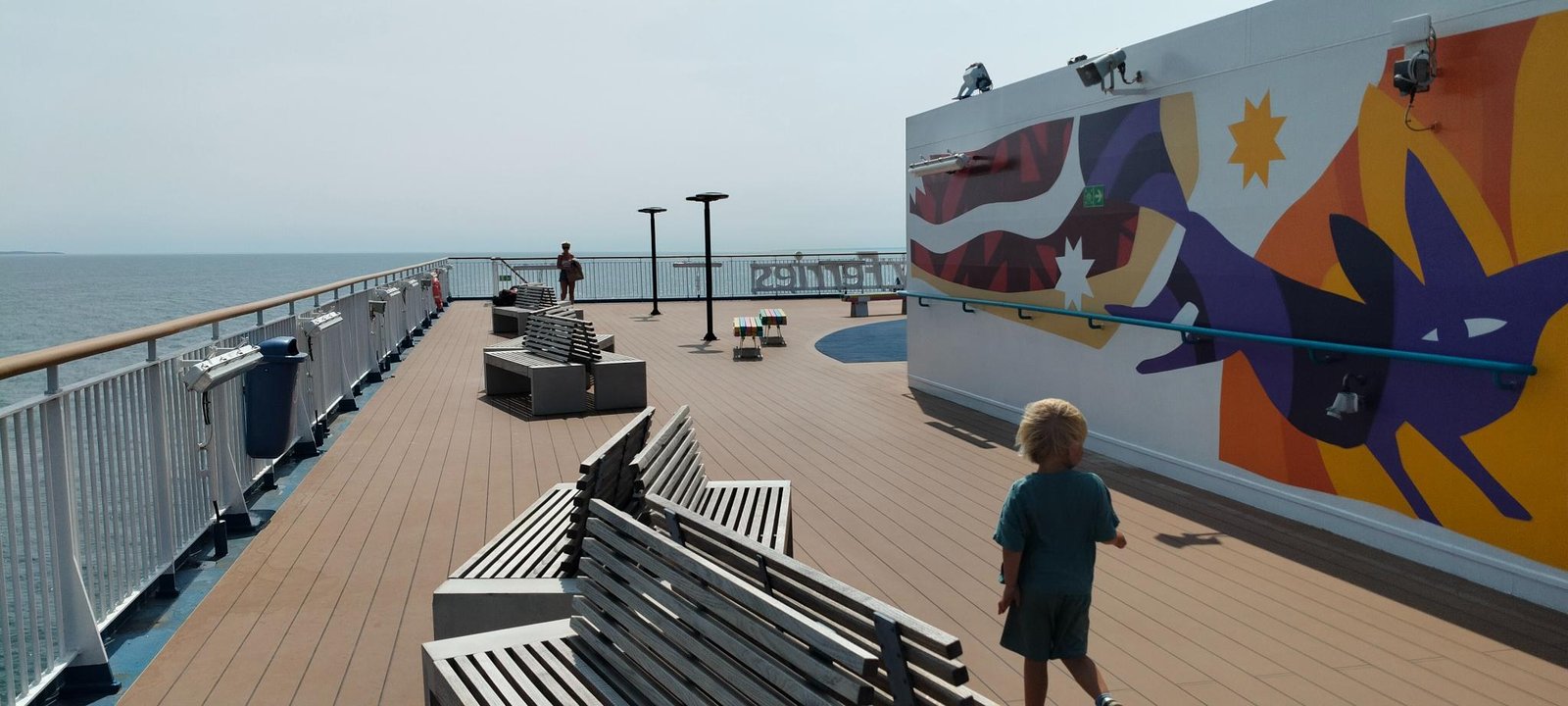Our ferry adventure: the shortcut to Denmark and Sweden!

“Just a quick trip to Copenhagen” – That was the plan. Of course, we also wanted to explore the ferry options (call it professional curiosity). When we write about a route, we like to experience it first-hand. And with the Scandlines ferries between Puttgarden and Rødby (and Rostock-Gedser) among the most popular on our sites, and such a handy shortcut to Denmark and Sweden, this was a crossing we had to try.
But once we were there, we thought: why not carry on over the bridge into Sweden? From there we could loop back to Denmark via the Helsingborg-Helsingør ferry. A perfect way to catch a glimpse of Sweden and try out a couple of alternative crossings along the way.
As you can tell, we had another great ferry adventure, covering as many ferry miles as possible on our journey to Copenhagen. In this blog, I’ll take you along!
Driving from the Netherlands to Puttgarden, Germany
Early Monday morning, Bram and Robbert left from the FerryGoGo office in Zeist, heading towards Germany. The roads were quiet: minimal delays and – something rare in Germany – few roadworks, meaning no ‘Staugefahr’ (traffic jam danger).
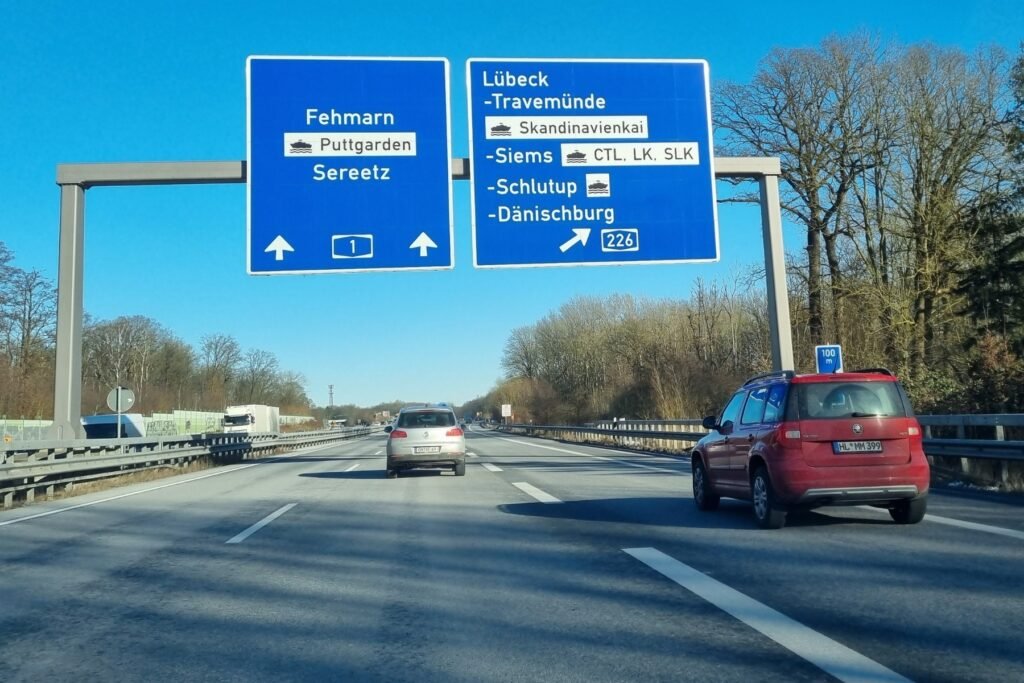
After about 6.5 hours of driving, we arrived in Puttgarden. From there, we took our first ferry (Scandlines!) to Denmark – specifically to Rødby.
Upon arrival in Puttgarden, one thing immediately caught our attention: an enormous hyperstore. Not just a regular supermarket, but a massive liquor store. This ‘bordershop’ spans multiple floors and is aimed at Danes looking to stock up on cheap alcohol in Germany.
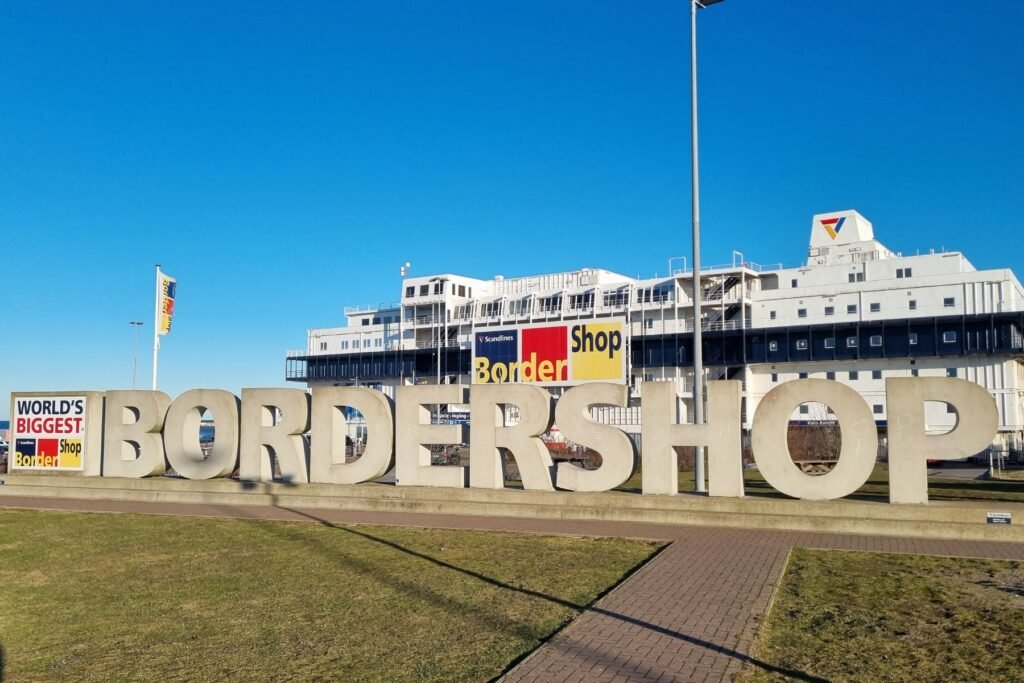
The hundreds of shopping carts and vast parking areas reveal that this is a popular spot…
Ferry crossing: Puttgarden to Rødby with Scandlines
Time to check in! After about 20 minutes, we drove onto the ferry operated by Scandlines, which runs the Puttgarden-Rødby route. The ferry was clean and had a restaurant and a small shop on board. As we boarded, the sun was setting. We quickly grabbed two cold beers and toasted on deck to a great start to our ferry adventure.
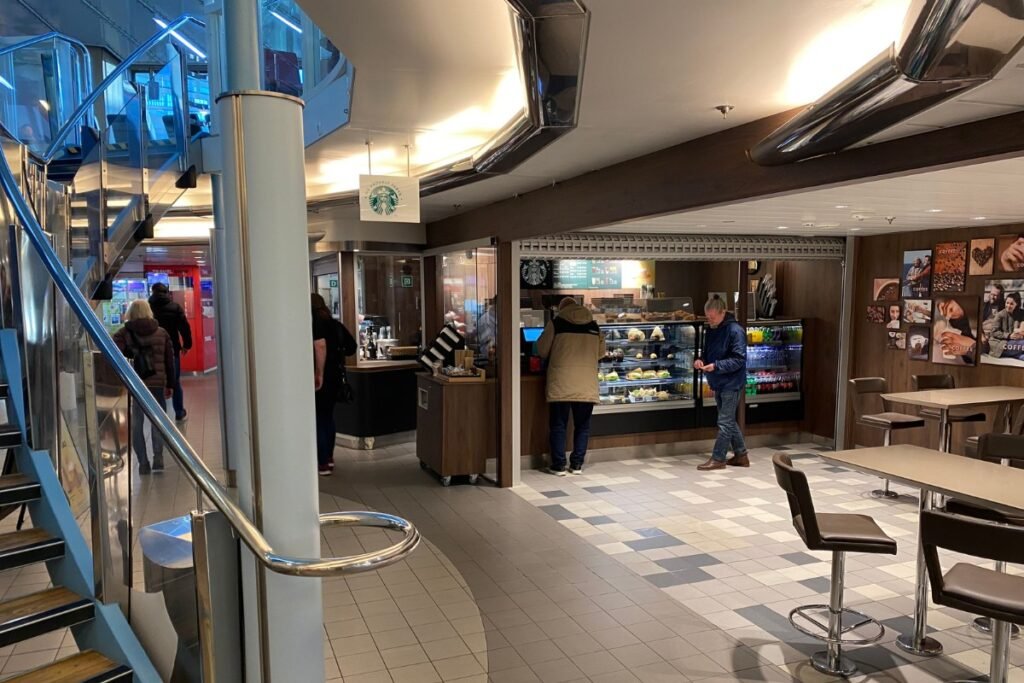
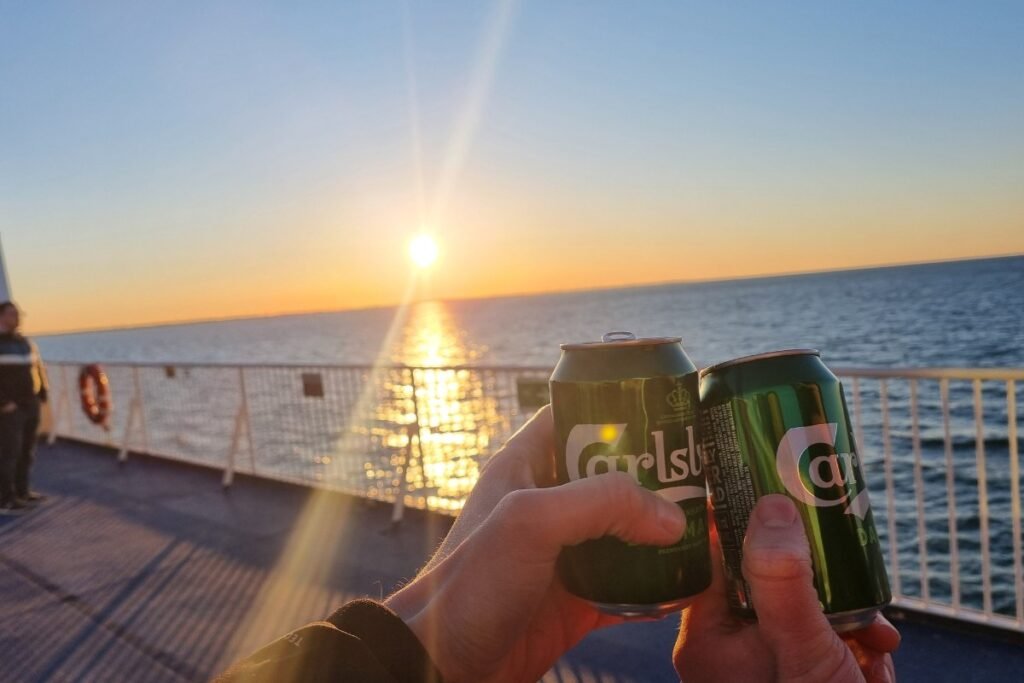
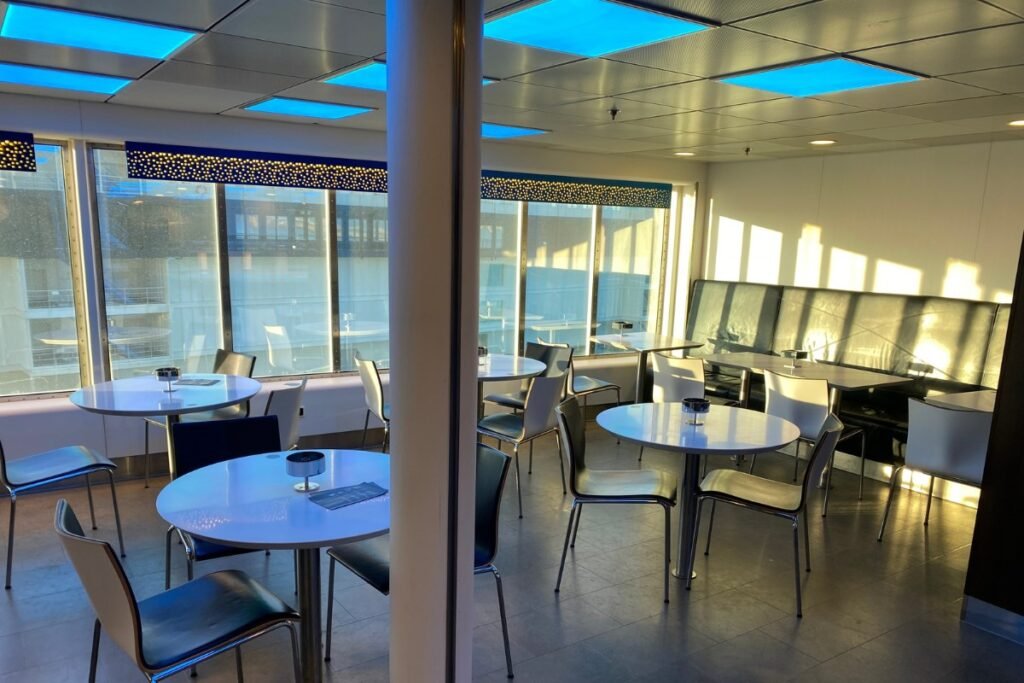
Of course, we also captured some beautiful footage, as we were making this crossing to expand our knowledge for the website PuttgardenRodby.com.
Overnight stay in Denmark
After approximately 45 minutes, we arrived at the port of Rødby. We exited the harbour and continued our journey to Copenhagen, a drive of about an hour and a half. Once in Copenhagen, we checked into our hotel (Hotel Danmark) and decided to have dinner at a nearby restaurant (Restaurant Rio Bravo). At this fun, western-style spot, we enjoyed a delicious burger.
From Denmark to Sweden via the Øresund Bridge
After a good breakfast at the hotel the next morning, we took the bridge from Denmark to Sweden. We had pre-purchased a ticket for this so-called ‘Øresund Bridge.' Oops: as we drove onto the bridge, we realised the sunlight was working against us to capture footage and photos. So, we decided to drive back immediately. And honestly, isn’t this a stunning sight?
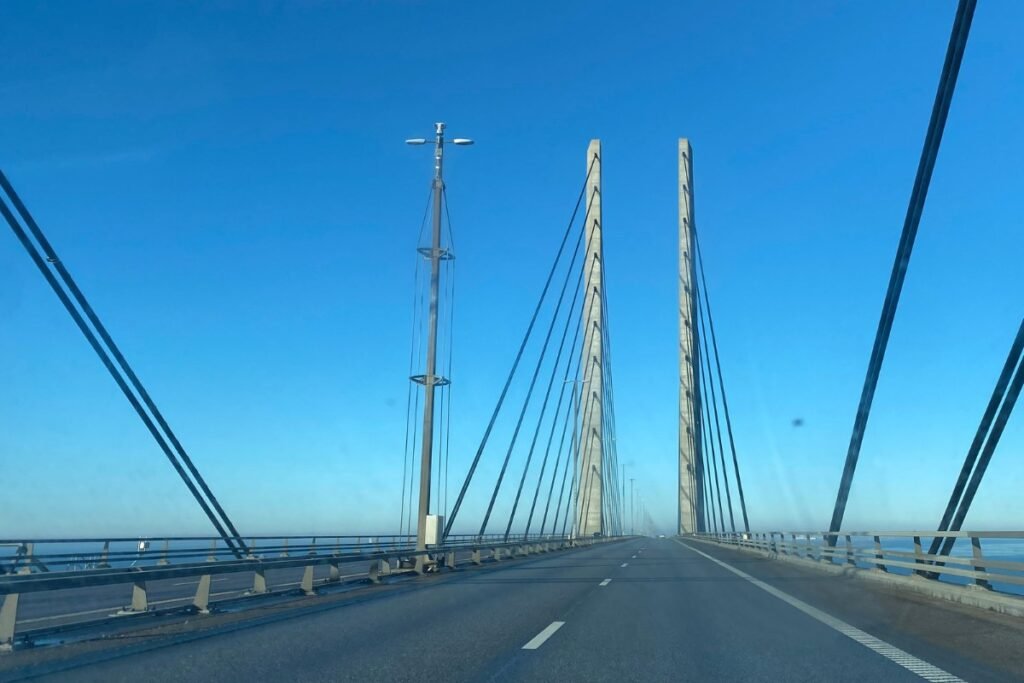
Ferry from Helsingborg (Sweden) to Helsingør (Denmark)
Once back in Sweden (yes, we had to return again), we continued our journey towards Helsingborg by car. This time, we finally wanted to take the ferry from Helsingør to Helsingborg!
After about 50 minutes, we arrived in a small ‘university town.’ We had already bought a ticket with Öresundslinjen (the operator on this route), but we arrived two hours earlier than expected. A key takeaway: choose the ‘Standard’ tickets.
Even though they sound ‘standard,’ these premium tickets give you an 8-hour flexibility window for your arrival time. Since we didn’t have this option, we had to choose: either wait a few hours or buy a new ticket. As we had to be back in Copenhagen that afternoon, we decided to buy a new ticket.

After a short wait, we were able to drive onto the ferry. The ferry was relatively small but had a restaurant and a supermarket. Fun fact: about 10 minutes into the trip, an announcement was made that we had crossed the border from Sweden to Denmark, meaning alcohol was now cheaper in the onboard supermarket.
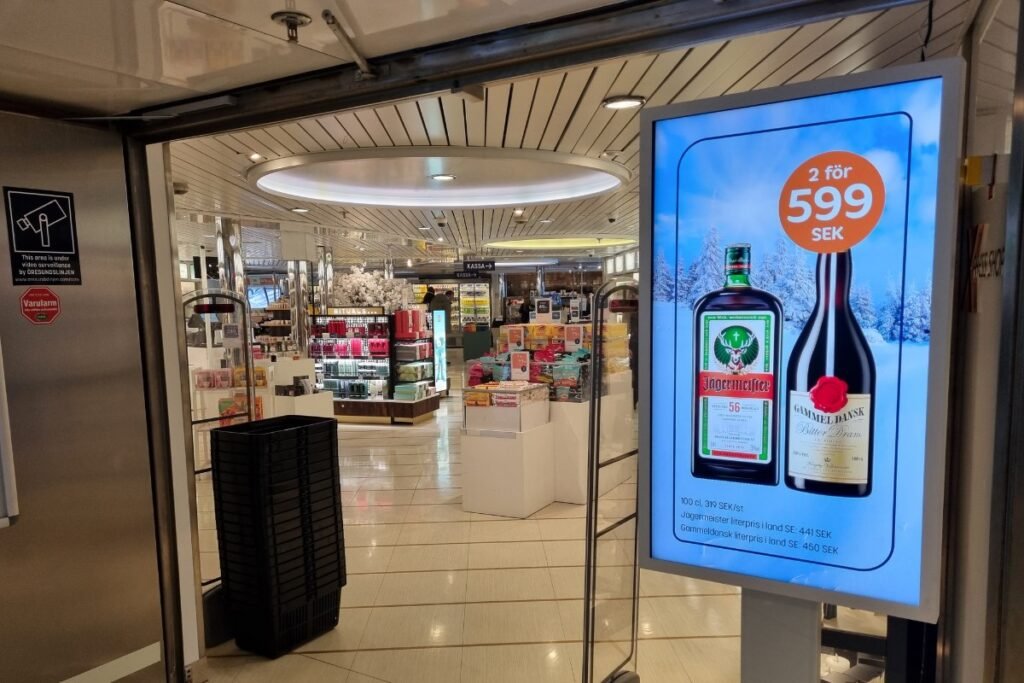
The crossing was very short and efficient – after just 20 minutes, we were on the other side. It was nice to stand on the deck and take in the views. The harbour of Helsingør is home to the famous Kronborg Castle (also known as Hamlet’s Castle), which is beautifully visible from the boat.
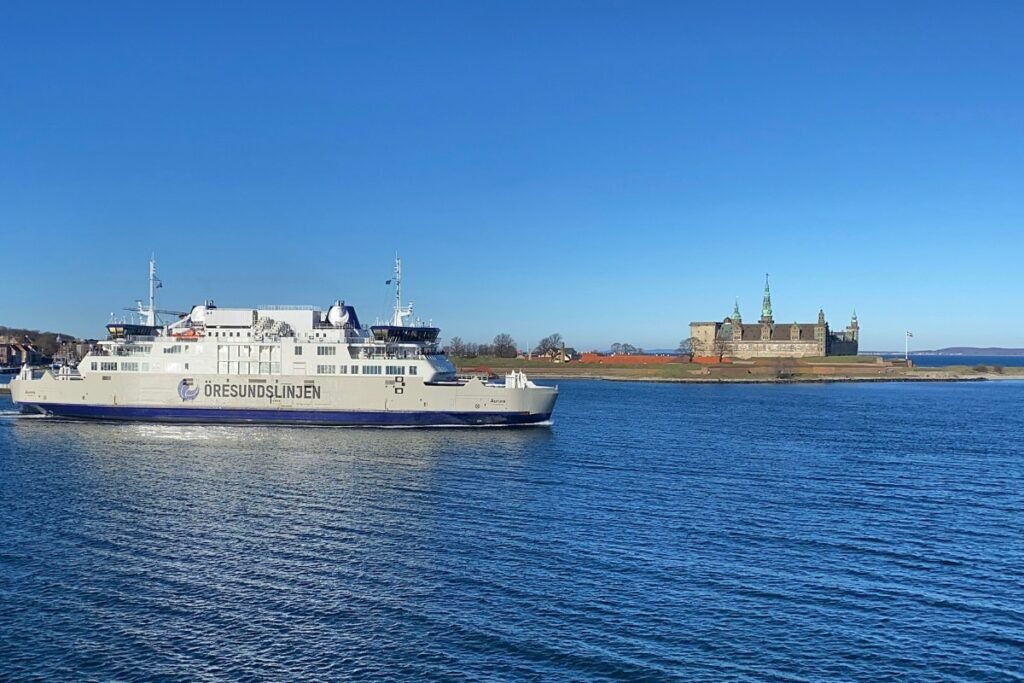
Sightseeing in Copenhagen
After the crossing, we drove back to where we had started that morning: Copenhagen! Just 45 minutes later, we were back at the hotel and decided to take a relaxing walk. The sun was shining (though it was very cold), so it was perfect weather for sightseeing.
Copenhagen is a clean and beautiful city. We visited some of its famous landmarks:
- The Little Mermaid (a mermaid statue in the harbour)
- Tivoli (the oldest amusement park in Europe)
- Nyhavn (the colourful houses)
In addition to these attractions, we simply enjoyed experiencing the city itself. We wandered through shopping streets and had lunch by the water.
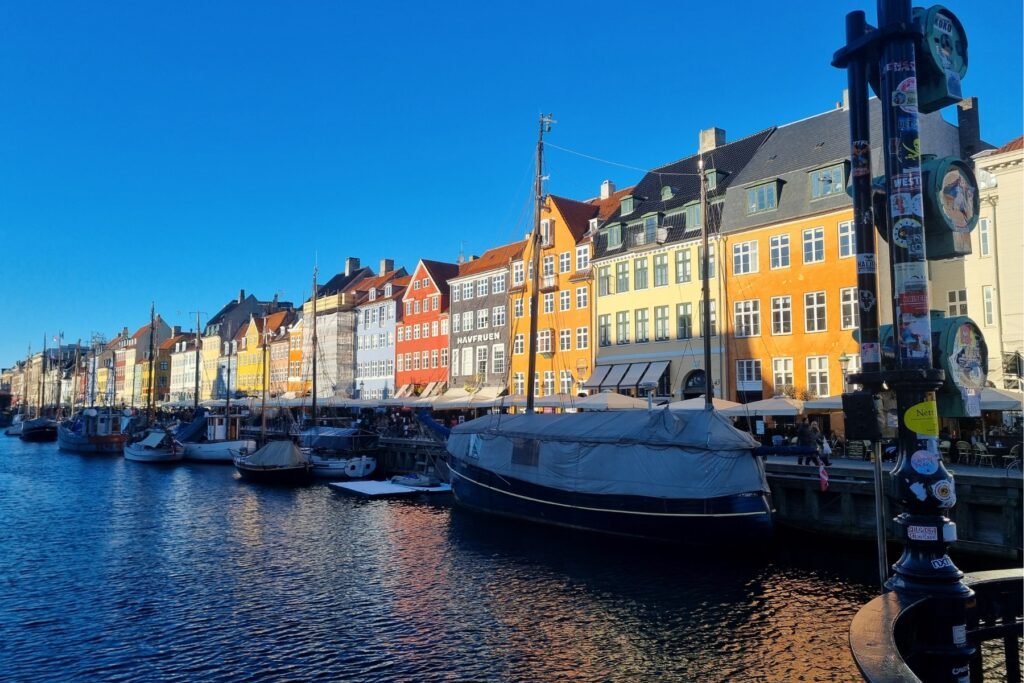
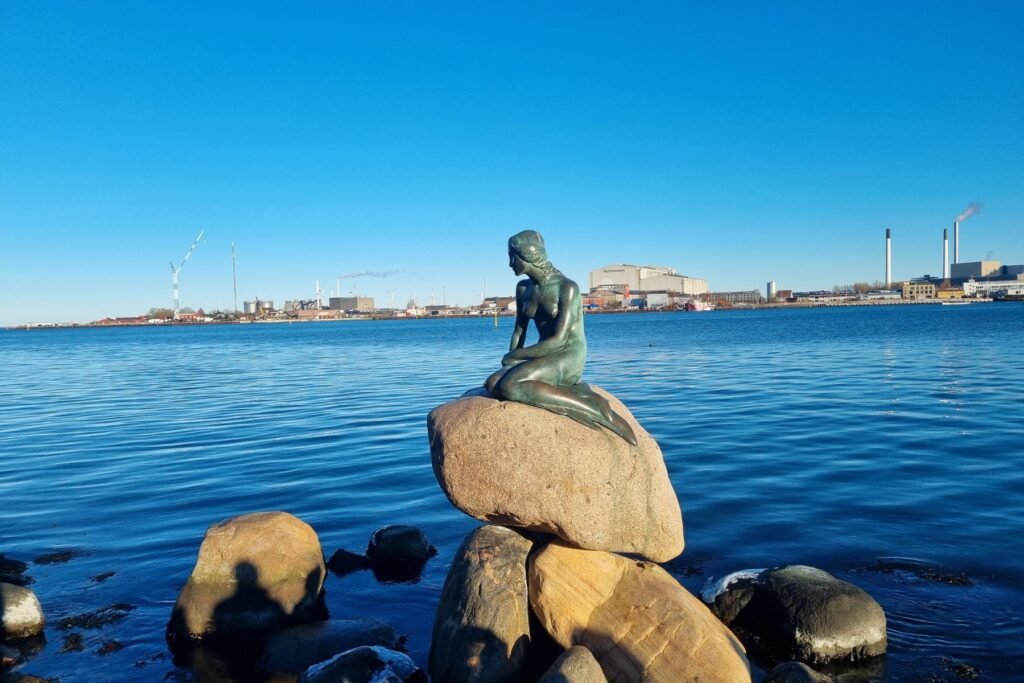

After our walk, we returned to the hotel. Between 5:00 and 6:00 PM, they offered complimentary wine tastings, which was a great excuse to warm up. Later, we ordered another beer, which immediately explained why the bordershop in Puttgarden was so popular – we had to pay €18 for two Carlsberg draft beers! 🤯
Last day: Gedser-Rostock Ferry
The next day, it was time to head home. After breakfast, we checked out and drove to Gedser, where we would take the ferry from Gedser to Rostock. Gedser is a tiny harbour town. There’s just one supermarket, and that’s about it. Since we were way too early, we bought some snacks and walked around the village. To pass the time, we explored the Scandlines terminal and took some pictures.
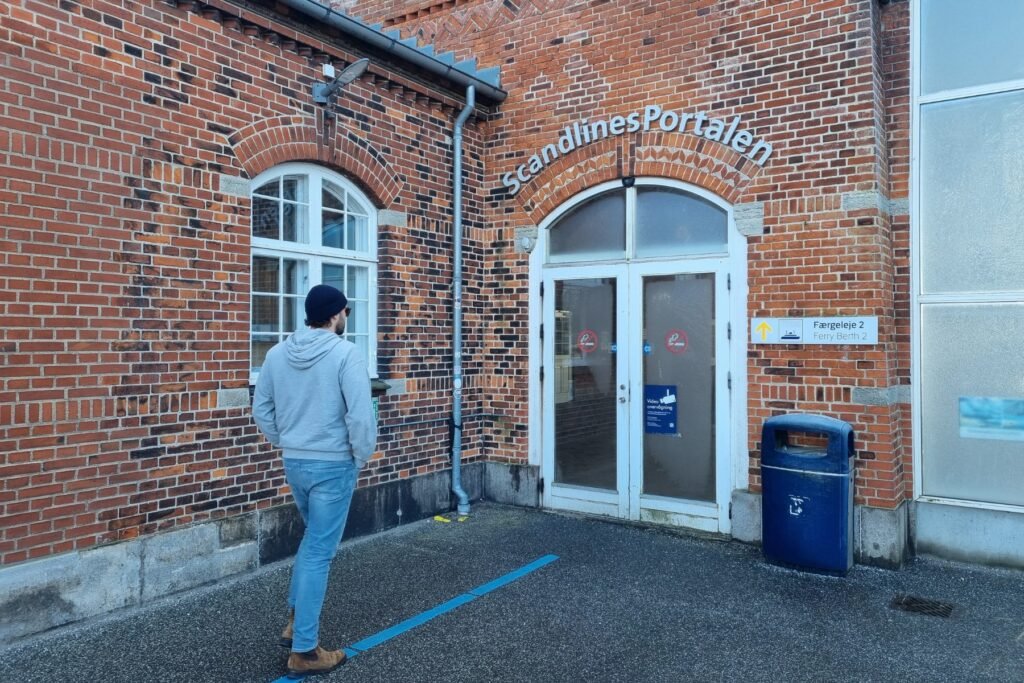
On board with Scandlines
After a while, we checked in and could soon drive onto the Scandlines ferry. The ferry had all the amenities you could need, including:
- A restaurant
- Cafés
- Starbucks
- A children's play area
- Various seating areas
There was also an All-Inclusive Buffet area. You could sit here throughout the crossing and enjoy unlimited food and drinks with special tickets.
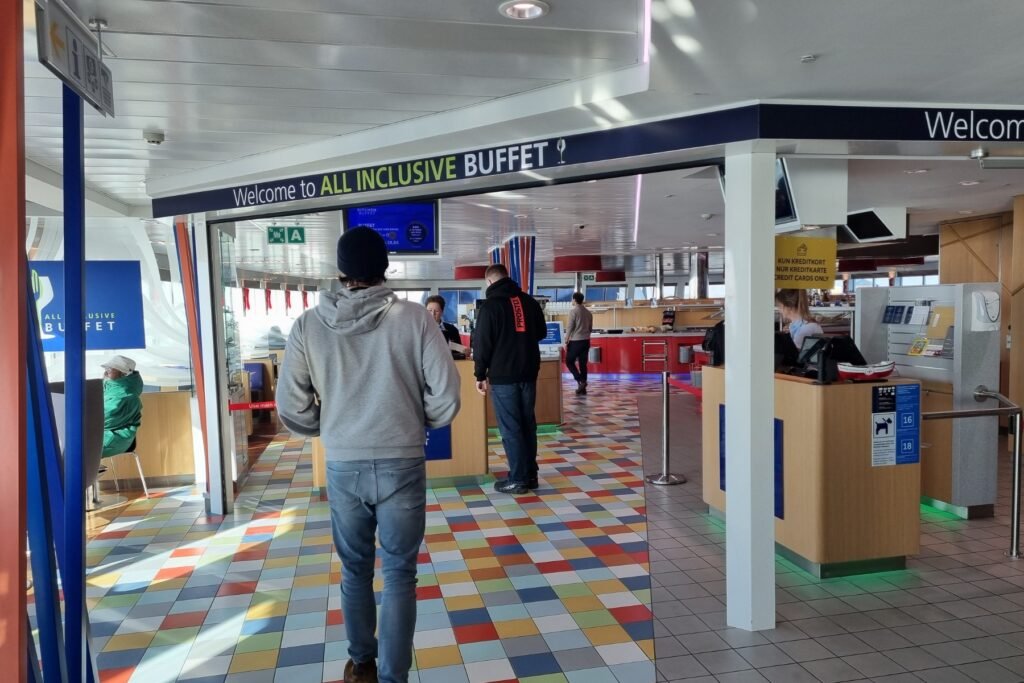
Since it was another beautiful day, we decided to take a lot of footage on deck for our websites. We travelled on the Scandlines Berlin, which harnesses wind power for energy. We could see the enormous ‘rotor sail’ spinning from the deck. What an impressive piece of engineering!
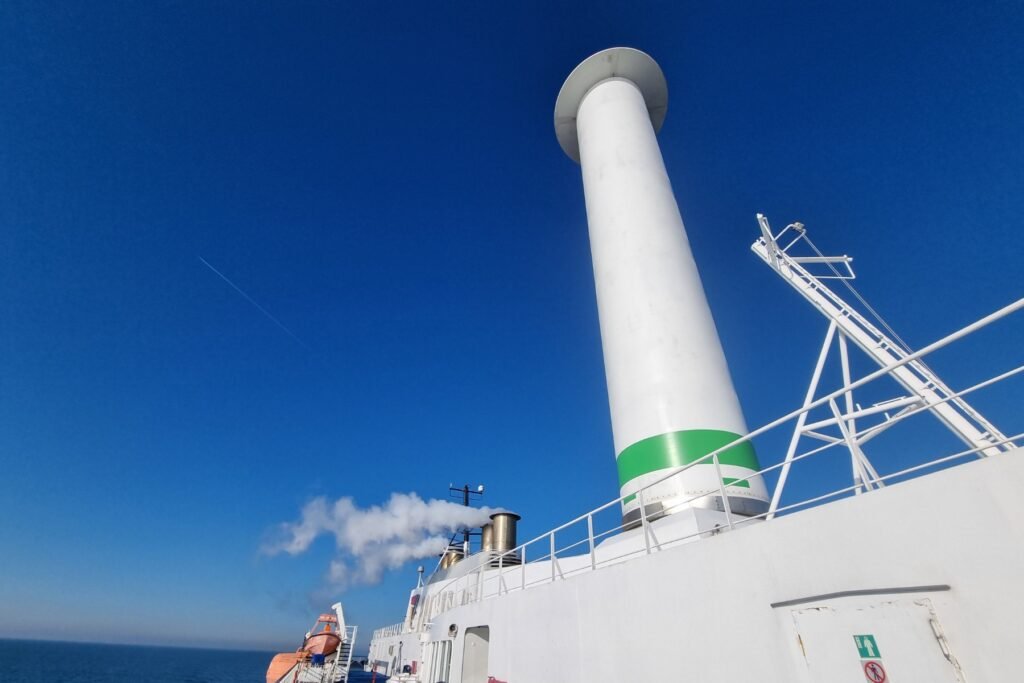
During our crossing, there was even a police training exercise happening on board – fascinating and slightly thrilling to watch from the deck!
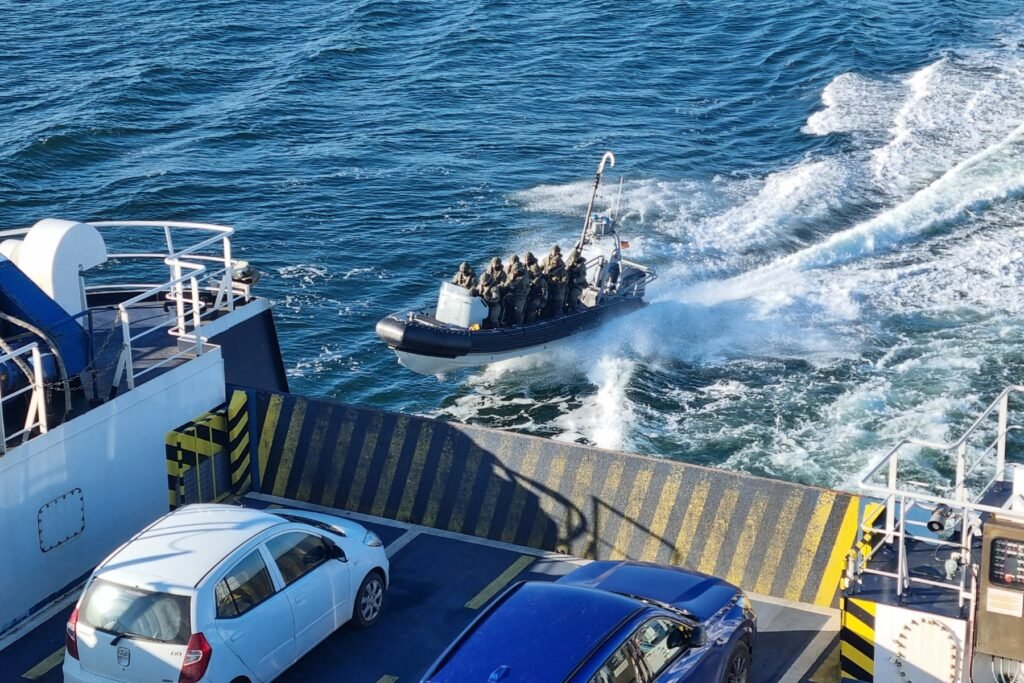
Driving from Rostock Back to the Netherlands
After a two-hour ferry ride (normally 1.5 hours, but we faced headwinds), we arrived in Rostock. From there, we drove back to the Netherlands. After a 7-hour journey, we arrived home, tired but satisfied and with a huge collection of stunning footage. We went straight to bed because we couldn't wait to upload our photos and videos to our website!
Why take the Puttgarden to Rødby ferry?
- This is one of the smartest shortcuts into Denmark – and onwards to Sweden and Copenhagen. The crossing itself takes only about 45 minutes and sails up to every 30 minutes, so you can simply drive up and roll on.
- You can even book handy combi-tickets, combining this ferry with the Øresund Bridge to Malmö or with the Helsingør-Helsingborg ferry. Perfect if you’re heading further into Sweden.
- It’s a very efficient route: you avoid hours of driving through Jutland and get straight onto Denmark’s main road network.
- Great for families (kids barely have time to get bored), and super convenient for campers and caravans; just book the right vehicle length and go.
- Scandlines also runs modern, greener ferries with cafés and lounges on board, so even a short hop feels easy and relaxed.
The editorial team at FerryGoGo writes travel guides and creates route ideas for ferry travel, along with everything else that might be of interest to travelers and tourists.
